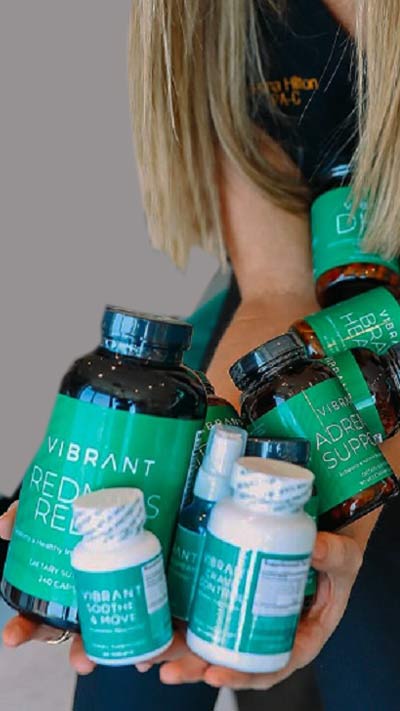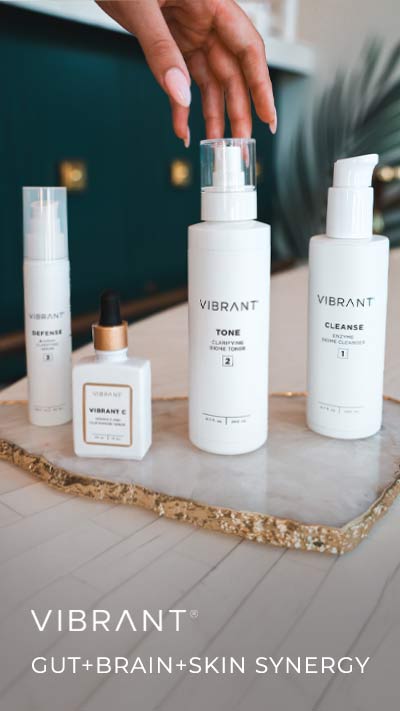The search for rejuvenating skincare products never ends. Most people interested in cosmetics know about the power of antioxidants, but many other ingredients with impressive skin-enhancing qualities remain under the radar. It may be time for linoleic acid to take the spotlight.
This article explains what linoleic acid does for the skin and how to use it to improve your complexion.

What Is Linoleic Acid?
Linoleic acid (LA) or omega-6 fatty acid supports essential bodily functions, including brain health, metabolism, growth, and development. It is also the key component of ceramides, lipids that maintain optimal skin moisture levels. Since our bodies don’t make omega-6 fats, we need to include them in our diet.
Skin experts sometimes refer to linoleic acid as vitamin F, where F stands for fat. Vitamin F is, actually, a combination of two essential fats: linoleic acid (omega-6) and alpha-linolenic acid (omega-3).
Note: Read more about how fatty acids can improve skin health.
Sources of Linoleic Acid
Linoleic acid is primarily found in plant-based oils. People who don’t consume enough foods with linoleic acid can use supplements. Topical products with vitamin F can improve our skin’s health and appearance.
Oils High in Linoleic Acid
The following oils have a high concentration of linoleic acid:
- Sunflower seed
- Hemp
- Prickly pear seed
- Grapeseed
- Pumpkin
- Rosehip seed
- Corn
- Safflower
- Soybean
- Canola
- Argan
Foods Rich in Linoleic Acid
Apart from vegetable oils, the best food sources of linoleic acid include seeds (such as flax, sesame, chia, pumpkin, sunflower, and poppy), nuts, fatty fish, eggs, and dairy. Our intake of omega-6 fatty acids should be moderate and in an optimal proportion with omega-3 fats. Scientists speculate that the ratio should be one to two portions of omega-6s to one portion of omega-3s in order to maintain healthy cholesterol levels.
Benefits of Linoleic Acid
Linoleic acid is crucial for our wellbeing. Scientific studies and anecdotal experience support claims about its beneficial properties.
Benefits of Linoleic Acid for the Skin
Linoleic acid is a powerful ally in maintaining a healthy, youthful complexion. It provides the following benefits:
- Strengthens the natural skin barrier – Linoleic acid contributes to the production of ceramides, lipids that build the outermost skin layer.
- Deeply hydrates the skin – By building a stronger protective layer, LA prevents water loss and increases hydration.
- Protects the skin from environmental aggressors – A resilient skin barrier reduces damage from UV rays, smoke, and other pollutants.
- Helps reduce acne – People prone to acne often have a disbalance of linoleic and oleic acid in their sebum. LA helps balance natural oils, clear the pores, and reduce breakouts.
- Reduces inflammation – Linoleic acid is a mild oil that helps soothe inflamed skin and reduce irritations. The body can convert it to gamma-linoleic acid, which helps regulate skin inflammation.
- Improves skin tone and texture – Linoleic acid increases cell turnover (the shedding of dead skin cells), helping to reduce the appearance of fine lines and sun-induced hyperpigmentation, and smooth the skin.
Health Benefits of Linoleic Acid
Apart from improving the natural skin barrier, moderate intake of linoleic acid supports other bodily functions.
- Brain function – Linoleic acid helps build neuronal cell membranes, regulates nerve signaling, and modulates neurotransmitters’ release, crucial for cognitive function and mood regulation.
- Heart health – Studies suggest LA may reduce total and LDL cholesterol, decrease blood pressure, and improve insulin sensitivity.
- Immune function – Linoleic acid regulates the production of cytokines, proteins that help manage inflammation and support the immune system.
- Weight control – Linoleic acid may help promote satiety, reducing food intake.
Drawbacks and Side Effects of Linoleic Acid
Linoleic acid is generally considered safe for use in our diet and cosmetics. However, doctors warn that when used in excess, it can harm the heart and blood vessels. Furthermore, fatty acid supplements may cause upset stomach, nausea, diarrhea, and fatigue.
LA is a gentle ingredient in skincare products, suitable for all skin types. Its only drawback is a short shelf life (three to six months) because it quickly oxidizes when exposed to air and light. However, manufacturers use other ingredients, such as vitamin E, to stabilize LA and increase its shelf life.
How to Use Linoleic Acid in Skin Care
Linoleic acid is typically used as one of the ingredients in cleansers, serums, creams, and oils. It is often paired with hyaluronic acid, ceramides, squalane, niacinamide, vitamin C, and other oils.
Because it is gentle and anti-inflammatory, it can be used in the morning and evening. Start using it once daily to see how your skin reacts, and then increase by applying it twice daily. If used in a serum, apply it after cleansing and before moisturizing. If using an oil, apply it instead of or after a moisturizer.
Linoleic acid is a potent ingredient in skin care because of its ability to retain water and improve skin barrier function. It rarely causes irritation.
Note: Read our ultimate skincare guide to learn the basics of proper skin care.
Linoleic Acid FAQ
The following are frequent questions from people interested in incorporating linoleic acid into their skincare regimen.
Is Linoleic Acid Safe for Skin?
Linoleic acid is a gentle and safe skincare ingredient with anti-inflammatory properties, helping to reduce irritation. All skin types can use it, and it is safe to use during pregnancy.
Does Linoleic Acid Unclog Pores?
Linoleic acid is considered non-comedogenic, which means it doesn’t clog pores. Research suggests people prone to breakouts have low levels of linoleic acid in their skin. Topical linoleic acid use may help increase linoleic acid and balance sebum production, helping to unclog pores.
Is Linoleic Acid Good for Acne?
Linoleic acid is good for acne because it balances and softens sebum, helping to unclog pores that lead to breakouts.
Conclusion
Linoleic acid in skin care is perhaps overshadowed by other anti-aging ingredients, such as retinol and vitamin C. However, skin experts are increasingly appreciating LA’s moisturizing and skin-strengthening qualities. Incorporate it into your daily skincare routine and use it consistently to see results.


